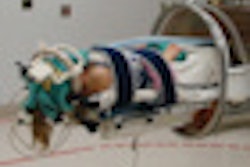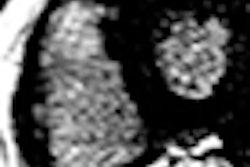Dear MRI Insider,
As we go to press, the U.S. Food and Drug Administration (FDA) is holding a closely watched meeting today in Gaithersburg, MD, to discuss its regulatory policy toward gadolinium-based contrast agents.
The meeting is being held to investigate the link between gadolinium contrast and nephrogenic systemic fibrosis (NSF), a debilitating skin disease that occurs in patients with renal impairment. Although the number of NSF cases has declined markedly as healthcare providers take precautions, the FDA wants to investigate whether it can further fine-tune its regulatory approach to gadolinium contrast.
So far today, several manufacturers of gadolinium contrast have given presentations, and the FDA has released some very interesting data on use per agent and adverse event trends in recent years. Check back in your MRI Digital Community for an update on this developing story, or click here to read a preview of today's meeting.
In other news, the 2009 RSNA annual meeting is history, but there remains a great number of research papers that bring new information and insights to radiologists and other healthcare practitioners.
This edition of the MRI Insider features new research from the University of Pittsburgh School of Medicine: A study team has found that using 1.5-tesla MRI with a continuous arterial spin-labeled (CASL) technique can distinguish with high sensitivity early signs of Alzheimer's disease from normal aging.
The study, presented at the RSNA conference, concluded that CASL MRI may be a useful screening tool in persons who are early in the course of Alzheimer's, and it is more effective than 1.5-tesla MRI with spoiled gradient echo in detecting potential symptoms. Read more about this fascinating paper by clicking here.
In other top stories, the use of intraoperative MRI during pediatric neurosurgery is enabling surgeons at Foothills Medical Centre in Calgary, Alberta, to perform less-invasive procedures by allowing them to modify the surgical plan midsurgery.
Associate editor Cynthia E. Keen reports on surgeons tracking the extent of the resection of tumors and other lesions, when using intraoperative MR imaging with integrated neuronavigation capabilities. This ability could potentially increase the safety of tumor resection by eliminating the need for subjective evaluations of anatomical relationships in complex surgical fields and the extent of lesion resection.
MRI is also among the imaging modalities expected to play a major role in the cancer management process -- from diagnosis and staging, to therapy planning and delivery, to response monitoring and surveillance. Medicalphysicsweb editor Tami Freeman reported from the American Society for Radiation Oncology (ASTRO) annual meeting on how emerging imaging modalities provide new opportunities for personalizing radiation therapy.
Keep in touch with the MRI Digital Community in the coming weeks, as we review more MRI-related research from RSNA 2009. Most of all, have a safe and happy holiday season!


.fFmgij6Hin.png?auto=compress%2Cformat&fit=crop&h=100&q=70&w=100)





.fFmgij6Hin.png?auto=compress%2Cformat&fit=crop&h=167&q=70&w=250)











